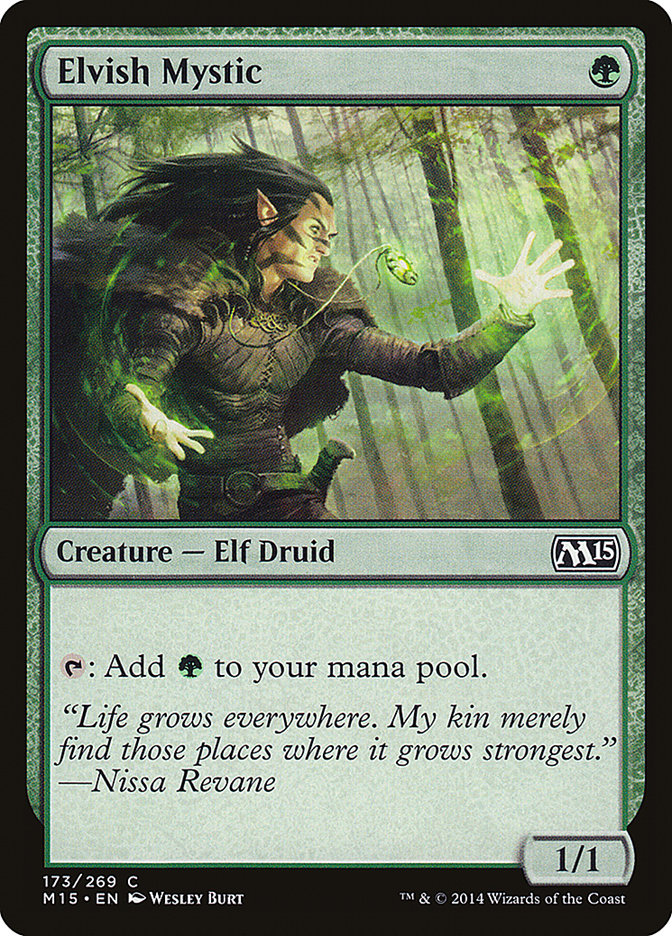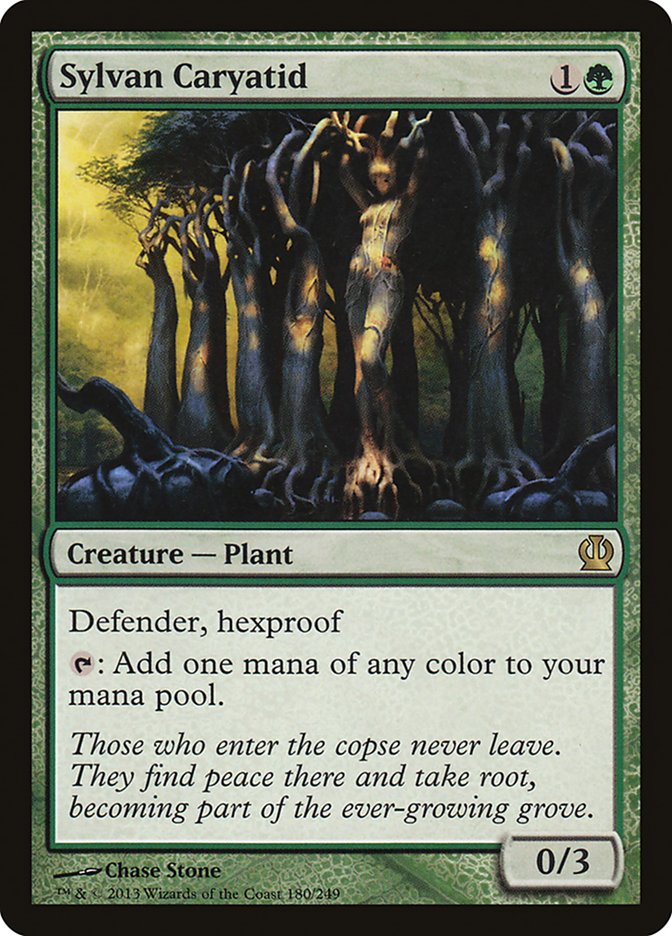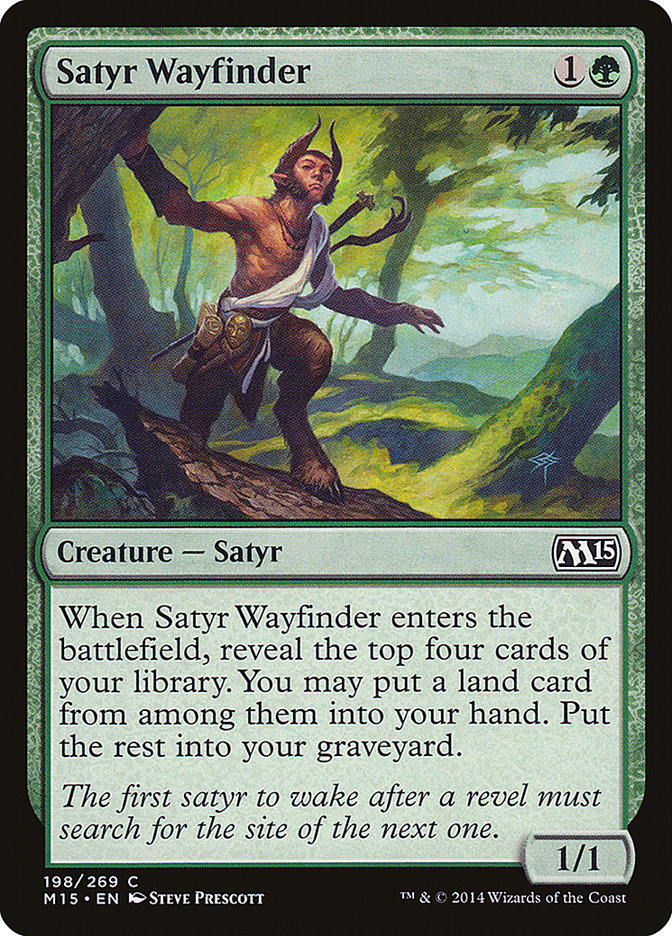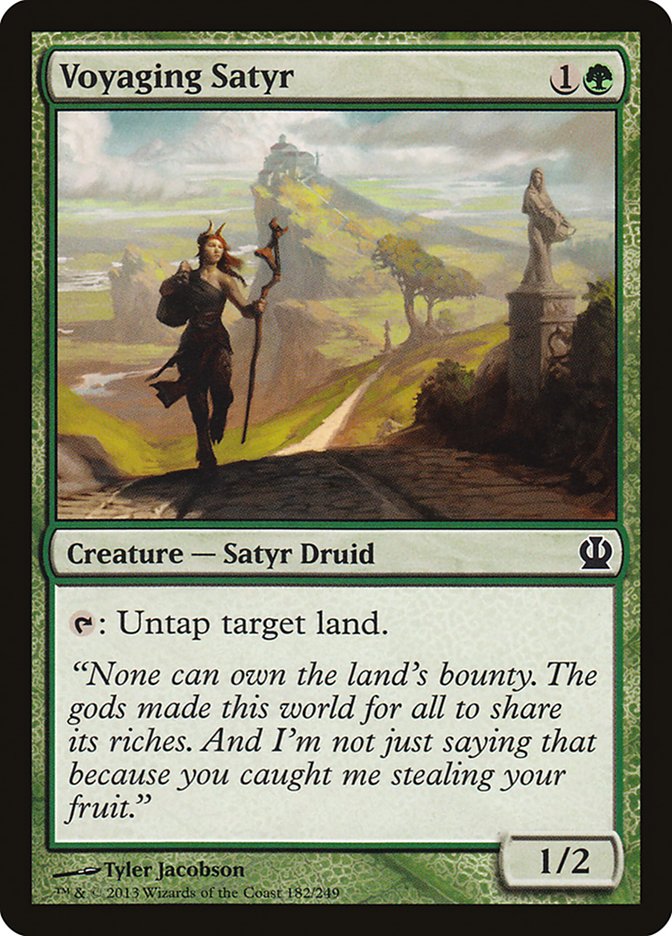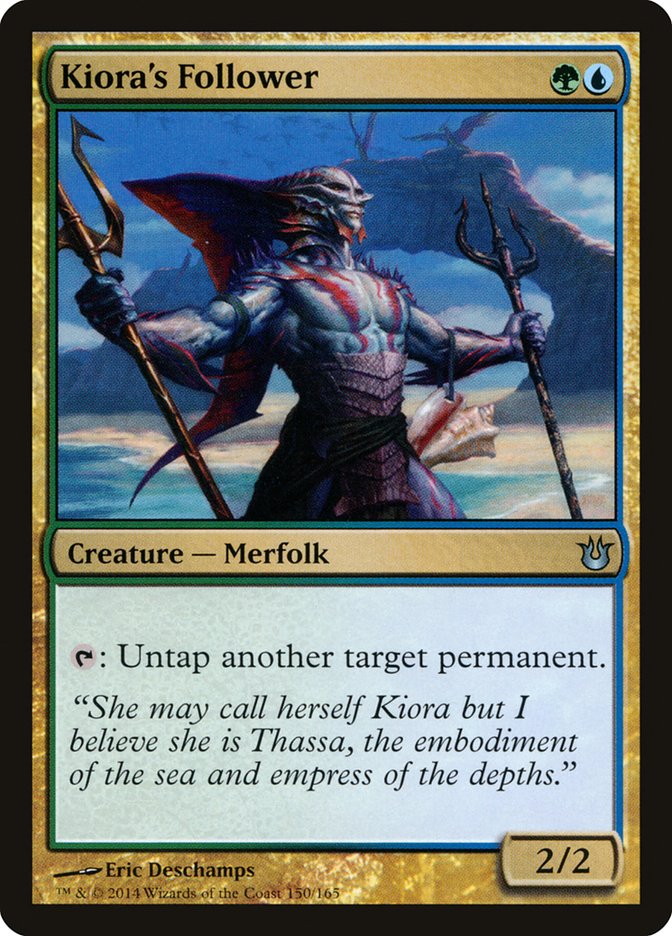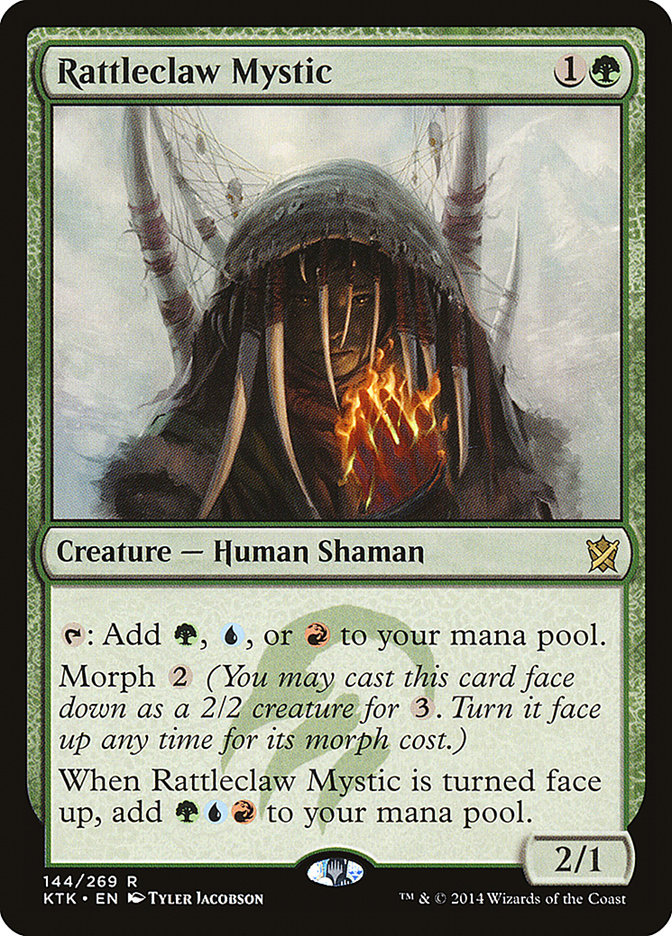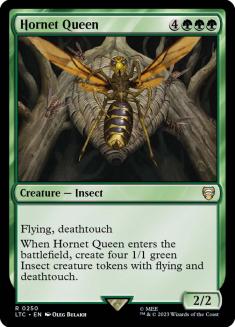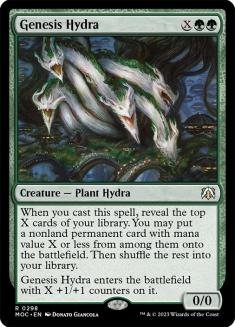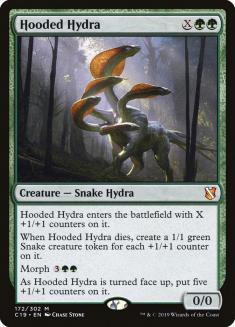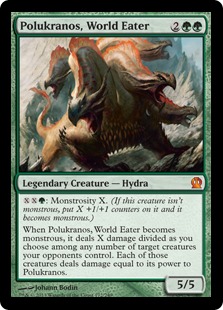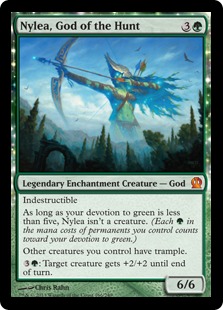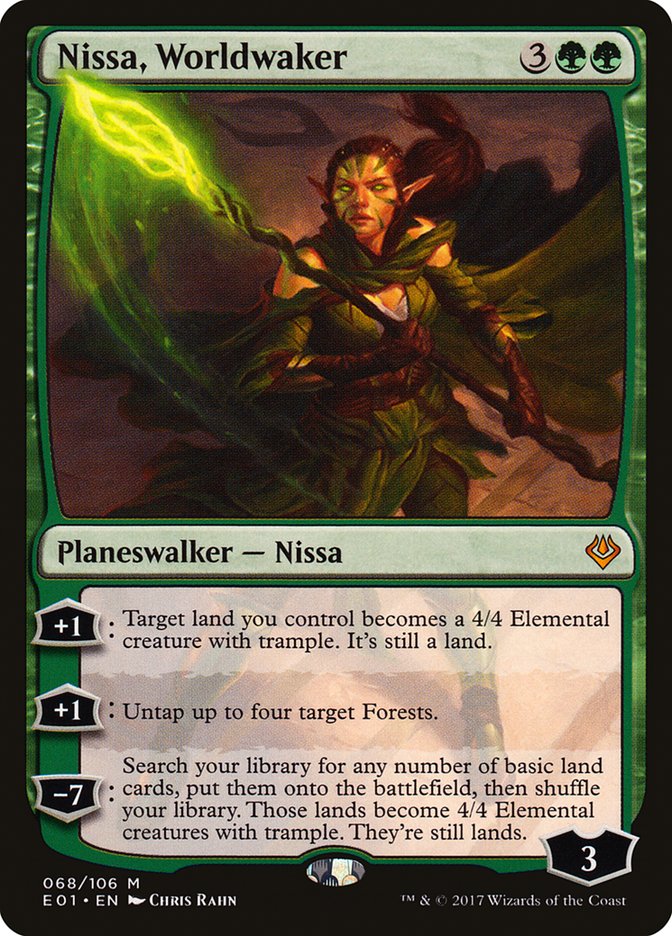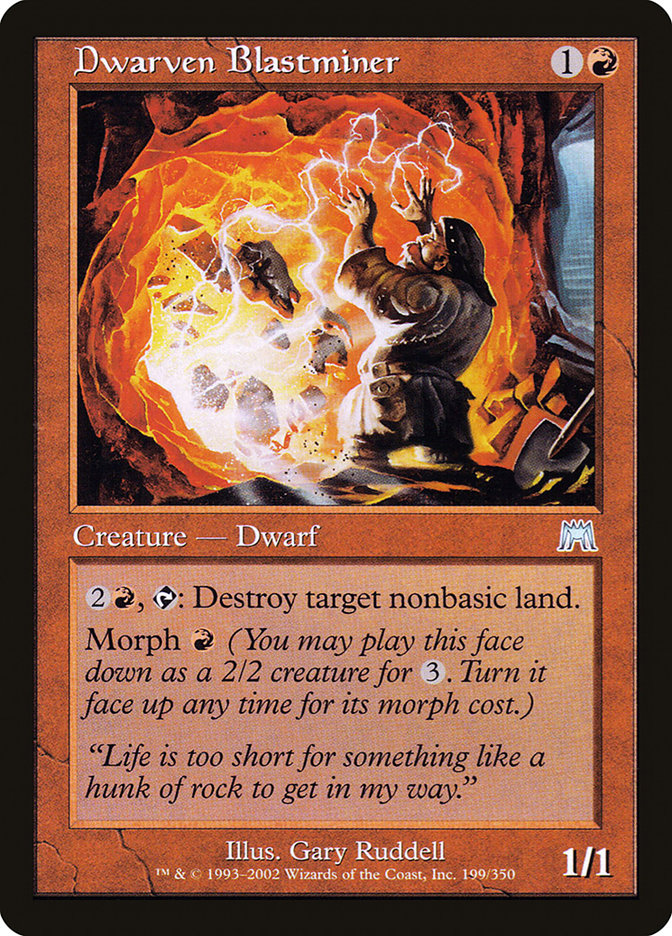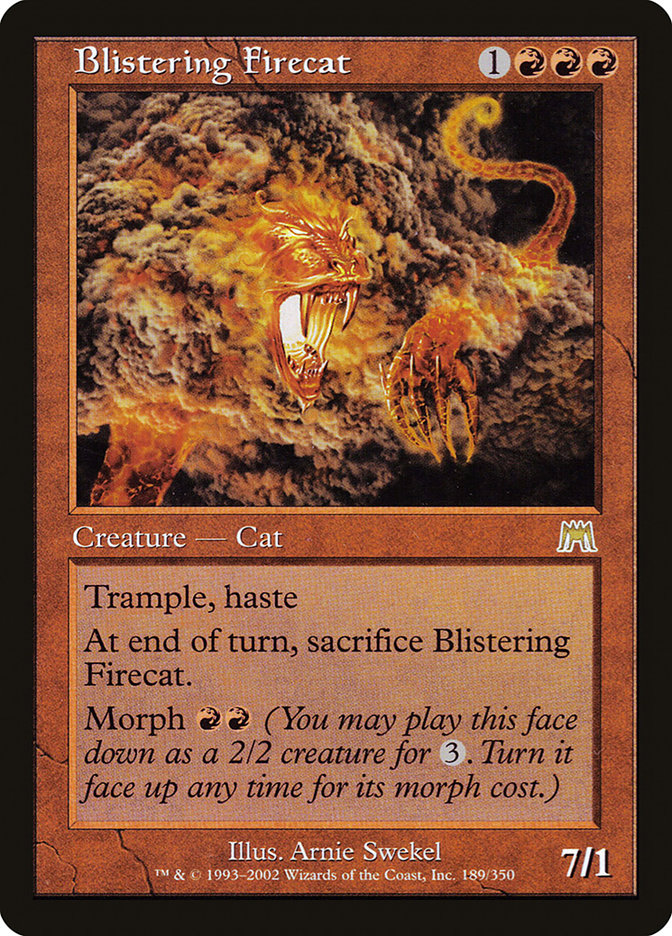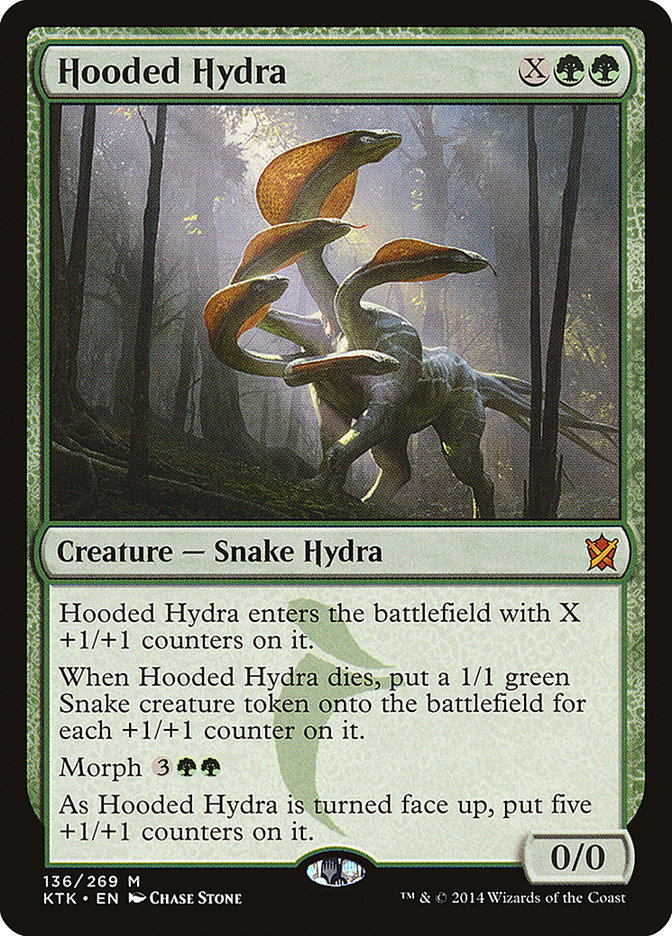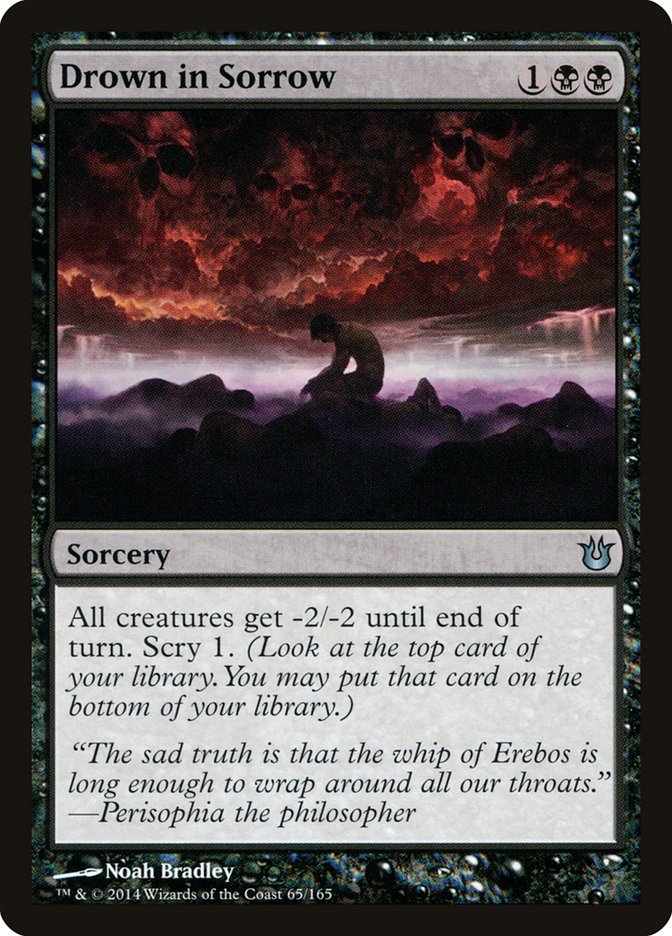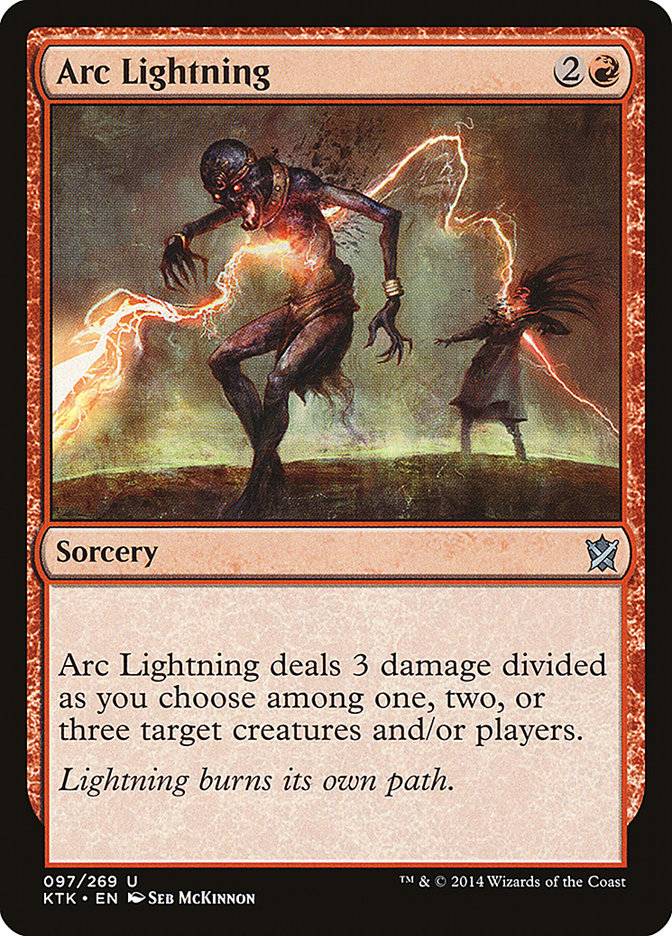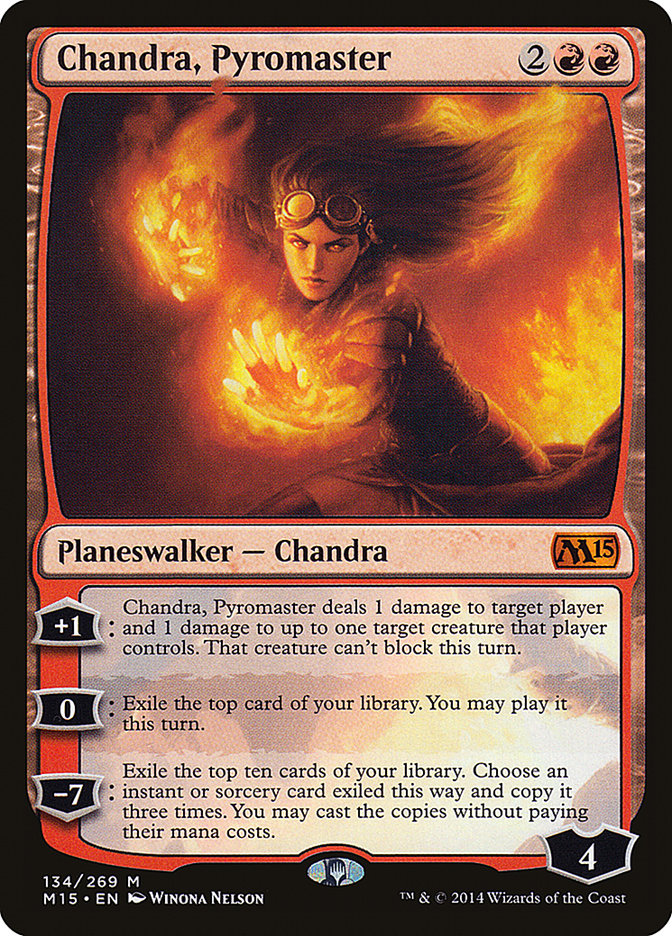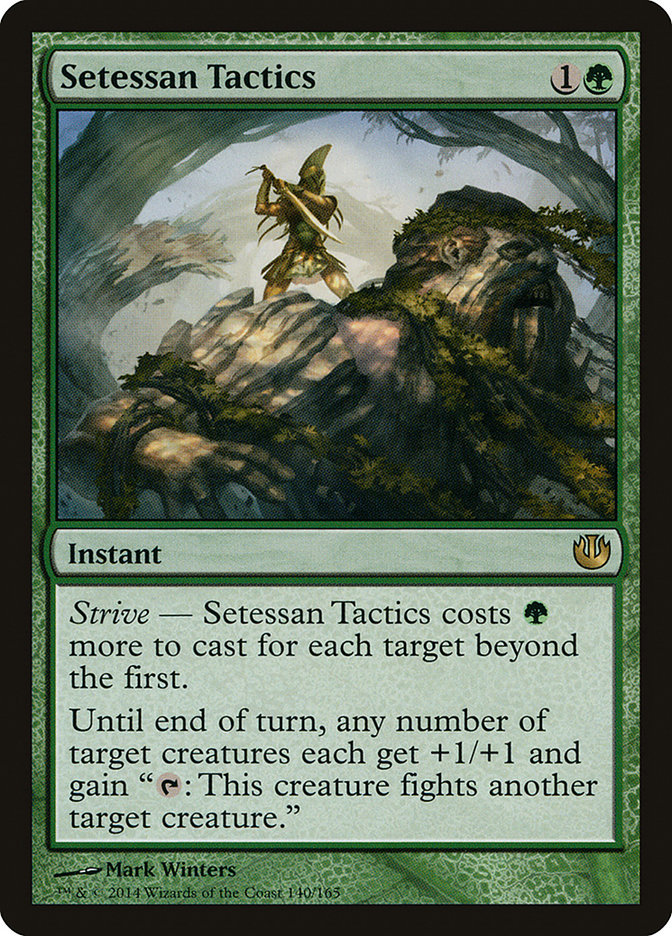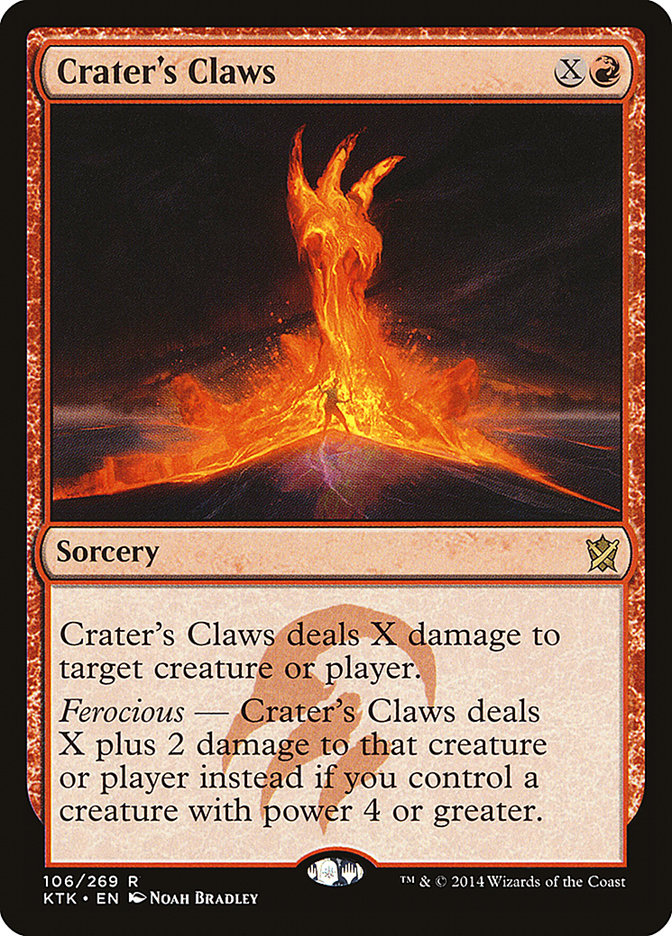I’m heading back to the Pro Tour for the first time in several years. Hawaii. I’ve never been to Hawaii, and even above and beyond going back to the Pro
Tour, I’m incredibly excited about taking this trip. There are plenty of things that I’m hoping to do in the little gaps between preparation and practice.
As you’re reading this, it’s very likely that I’ll be on a plane headed there or just arriving. I’m hoping for an incredible time there, not the least of
which would include a stellar finish at the event.
And so, like probably many of you, I was very interested in the results of the two simultaneous SCG events this last weekend, one in New Jersey
and the other in Indianapolis. These two events represent the beginning of the format that I’ll be playing in the Pro Tour and that will mark Standard for
the months to come. As the first major events after a rotation, they generally have a lot to teach us.
Even when I’m not writing as late in the week as I am, it is incredibly difficult to beat Patrick Chapin to the punch when it comes to analyzing event
results. His article on the weekend is a must-read, and
good for getting a grounding on the format. There are some rather startling things that happened between the two events, and they need to be thought about
carefully if one hopes to have any success in the coming months, not to mention weeks.
Khans of Tarkir is not just a gold set, but a so-called “wedge” set, emphasizing three colors at a time. Let’s see how that played out in the Top 8 of the
two events:
Green decks: 12
Red decks: 10
White decks: 7
Black decks: 5
Blue decks: 2
What really blows the mind is just how dominating Green was as a color being represented in decks. Of course, that is not really a surprise is it?
If we break it down by event we can see the relative absurdity of it all.
IN Green: 8
NJ Red: 6
NJ Green: 4
IN Red: 4
NJ White: 4
IN Black: 3
IN White: 3
NJ Black: 2
NJ Blue: 2
IN Blue: 0
Every
deck in the Top 8 of Indianapolis was a Green-based deck. Fully half of them in New Jersey were. When you look closer at the Top 32 of Indy, twenty-nine decks ran green. That is fairly bonkers. Does anyone else find themselves thinking back to the days that Bloodbraid Elf Jund was
rearing its head?
In a green-on-green world, what do we do?
Breaking Down the Greens
I think it is actually important to realize that these are not all the same deck (even when we’re told that they are). Take the top two decks at SCG
Indianapolis, both entitled “Abzan Midrange.” This illustrates the wild differences that are possible in lists even under the same general heading:
Creatures (25)
- 3 Hornet Queen
- 4 Elvish Mystic
- 4 Sylvan Caryatid
- 1 Ashen Rider
- 4 Satyr Wayfinder
- 3 Nyx Weaver
- 2 Necropolis Fiend
- 4 Siege Rhino
Lands (24)
Spells (11)

Creatures (22)
- 4 Sylvan Caryatid
- 4 Fleecemane Lion
- 3 Brimaz, King of Oreskos
- 4 Courser of Kruphix
- 3 Wingmate Roc
- 4 Siege Rhino
Planeswalkers (4)
Lands (24)
Spells (10)

The first deck is absolutely a graveyard deck, perhaps better called “Abzan Midrange”; the second is a true midrange deck, floating in between being a
midrange-aggro list (what we used to call “Junk” before that name came to mean a color combo) and a more controlling midrange list (like The Rock). In
either case, though, there is actually very little that these decks have in common.
So what does green look like in all of these decks?
I think the best way to break it down is to count and weigh the various decks in the two top 32s, giving weight to their final finish, categorizing them by
how they make use of green mana.
The cards that I’m mostly looking at will likely be of little surprise:
In addition, I’m paying attention to these cards:
Average Weighted Value – Green Use (Total Weighted Use)
30.9 – Elvish Mystic, Sylvan Caryatid, Courser of Kruphix (371)
29.4 – Elvish Mystic, Sylvan Caryatid, Courser of Kruphix, and more accel (559)
29.0 – Sylvan Caryatid, Courser of Kruphix (232)
27.7 – Other (279)
30.1 – No green (481)
It may come as no surprise that the most simple configuration was, generally speaking, the best. The trifecta of Mystic/Caryatid/Courser is simple and
powerful, and we know how successful it could be from the recent history with various planeswalkers and Monsters lists. In fact, this base powers up all
number of decks that are reminiscent of those slightly older lists.
Just behind it in the green lists are those decks that are going for massive acceleration. Most of them are nearly all green with small splashes, and they
are dipping into either Voyaging Satyr (if they are on a Nykthos plan) or Rattleclaw Mystic or both. Overall, this was actually the most populous group, and it did quite well.
The third group, those that ran merely Sylvan Caryatid and Courser of Kruphix, are largely those groups of Abzan Midrange lists that are using Sylvan
Caryatid to power out Siege Rhino and other powerful cards a turn earlier and are basically using Courser of Kruphix for value.
The fourth group is that mishmash of “other” that includes all of the Satyr Wayfinder lists, the odd deck that ran Elvish Mystic and no other
green mana accelerants, or similar configurations. With three or less people playing each of the varied configurations, it didn’t feel like there was much
use in giving an average of three or two players (or simply listing a single one). Finally, for comparison, we can see the group of no green at the bottom.
Those first three categories do feel like they encapsulate the majority of these decks: the simple build that we know we can make work; the mana aggressive
build, that pushes the boundaries of what is possible; and finally the build that only touches into green mana to support more aggressive midrange decks
(like those employed by Abzan Siege Rhino decks). The only group that gets hidden in the mix are the graveyard Satyr Wayfinder strategies.
It’s actually quite hard to find video coverage of these decks fighting against each other. There is, however, one match that is the closest to being able
to give a sense of what is going on:
Jim Davis is playing one of the second-category massive acceleration lists versus Matthew Costa playing a deck that actually is probably quite different
than our third group Abzan Mirange. While I can’t find Costa’s list, it seems to me that he isn’t playing Caryatid/Courser. Regardless, it does have much
spiritually in line with its Rhino playing cousins: the plan is to drop powerful cards and attack.
The TL;DW (too long didn’t watch) synopsis of the matchup largely involves better very early development from the mana aggressive Jim Davis, establishing a
clock from the midrange deck and some suppression of Davis’s plays, followed by late game explosion from Davis with a ton of mana.
Compare that to this matchup:
Here, the goal of the Wayfinder deck (to fuel up full graveyards to allow powerful plays) doesn’t much matter to Abzan Midrange, which just drops clocks
and blows up anything important. Brian Braun-Duin seems to make short work of Todd Anderson here, and while Todd’s brother in arms, Brad Nelson, did manage
a solid finish with the deck, Todd himself would end up having a short day.
The real difference between the first group, “Traditional Green” (the Monsters/Planeswalkers green shell) and the “Light Green” we’re seeing in the third
group, is a greater dedication to threats.
Compare Brian Braun-Duin’s list with Elvish Mystic to William Comminos without it:
+1 additional removal
24 Lands
Brian:
+3 Nissa, WorldWaker
24 Lands
Elvish Mystic in Brian’s deck certainly does have a power that it can attack with, but while it makes the deck faster, it also means that the deck has less
impact as the game goes on. It’s a substantive difference, but these two strategies are very similar overall, just placing slightly different emphasis on
different moments in the game.
If we want to look at a fairly straightfoward version of the aggressive mana version, look no further than the NJ Top 8, with Joey Manner:
Creatures (33)
- 2 Hornet Queen
- 4 Elvish Mystic
- 4 Polukranos, World Eater
- 1 Nylea, God of the Hunt
- 4 Sylvan Caryatid
- 3 Nylea's Disciple
- 1 Voyaging Satyr
- 4 Courser of Kruphix
- 4 Genesis Hydra
- 4 Rattleclaw Mystic
- 2 Hooded Hydra
Planeswalkers (4)
Lands (23)

This deck basically makes a ton of mana and then pours itself into the table. What are the scary things it can do?
The most surprising card here is probably Hooded Hydra, which comes with a nice little life insurance policy, but also exists in the same deck as
Rattleclaw Mystic, which can make for some fun guessing games. Lest you think these guessing games are not real, let me tell you from experience, sneaky
morph tricks are amazing. I used to play the shell game with these creatures:
To me, that feels pretty similar to this:
Altogether, we’re looking at two styles of decks then: mana generation decks and more midrange strategies. What are our options if we can expect this to be
the meta?
Options
Back when Jund was king (the first time), there came a moment where people realized that it was futile to try to fight the strategy head-on. You couldn’t
drive your car onto the tracks and face the power of that kind of midrange deck head on. If you were going to crash headfirst into a train, you’d better
just hope that you were a train too. The alternatives were going under the train (being too fast for them) or going over the train (being too powerful with
late-game spells). Both of these options were very difficult in that moment because Jund had great weapons in the form of excellent removal and incredible
disruption and card advantage to fight both sides.
Midrange green bases now are taking the role of that Jund deck of yore. However, they don’t have access to the same raw power, so it does mean we have more
options. The green mana decks have what seems like a natural advantage because they are able to go with that plan of “over the top.” They do it, however,
by employing a lot of small little critters.
One of the best “over the top” plays is Hornet Queen.
If you haven’t played against Hornet Queen, you might not realize just how devastating it is to have to deal with the Queen and her pawns. Deathtouch is no
joke, and Hornet Queen also represents a great deal of evasive power. One thing that can be particularly devastating is a large Genesis Hydra into
Hornet Queen, which can just wrap up many games. Hornet Queen is probably the most effective card to go over the top with, but the problem with going too
far down this path is that it leaves you vulnerable to glut if your mana fails to work out.
Since that should be the plan of an opponent, this does leave one with a conundrum.
One plan to answer this is to decimate the little guys. Ross Meriam did just this with his Constellation deck:
Creatures (35)
- 2 Hornet Queen
- 4 Elvish Mystic
- 4 Polukranos, World Eater
- 1 Nylea, God of the Hunt
- 4 Sylvan Caryatid
- 4 Voyaging Satyr
- 4 Courser of Kruphix
- 4 Eidolon of Blossoms
- 4 Doomwake Giant
- 4 Genesis Hydra
Planeswalkers (1)
Lands (24)

Here, you can see he employs the very same plan as the other green mana decks, but he cuts out a little bit of the beef on the top end for the
Constellation package. This lets him be able to keep the same “over the top” plan versus the green midrange decks and have a trump in the
near-mirror of green mana decks. This kind of plan seems fantastic.
However, the green midrange lists really can’t employ this kind of strategy very effectively. But perhaps they can learn from it.
One great weapon that comes to mind is Drown in Sorrow.
If you have the mana to support it and if you’re not planning on being the Elvish Mystic version of the deck, you can have Drown in Sorrow be an excellent
tool from the sideboard to fight these decks. I think it is incredibly unsurprising that William Comminos rose to the top in such an incredible green-heavy
field. Let’s look at his list in more detail:
Creatures (22)
- 4 Sylvan Caryatid
- 4 Fleecemane Lion
- 3 Brimaz, King of Oreskos
- 4 Courser of Kruphix
- 3 Wingmate Roc
- 4 Siege Rhino
Planeswalkers (4)
Lands (24)
Spells (10)

Literally only Elspeth tokens get killed by Drown in Sorrow in William’s deck. Between Abzan Charm, Hero’s Downfall, and Utter End, he has a lot of options
to clear up the big problem cards, while Drown in Sorrow can clean up the mana-dorks, Hornet Queen, and all of her brood.
What if you’re a green deck but you don’t have access to black to be able to fight the good fight?
Your options are limited, but one thing that was intriguing to me came from Michael Kohanim:
Creatures (30)
- 2 Hornet Queen
- 4 Elvish Mystic
- 4 Polukranos, World Eater
- 1 Nylea, God of the Hunt
- 4 Sylvan Caryatid
- 3 Arbor Colossus
- 4 Voyaging Satyr
- 4 Courser of Kruphix
- 4 Genesis Hydra
Planeswalkers (6)
Lands (23)
Spells (1)

He is running a green mana strategy, but from the sideboard he can also just potentially tear down the world of an opponent employing the same strategy.
You still have trouble with a Queen hitting the table, but you have Queen of your own. In addition, you might just blow up all of their pesky mana and be
the only one able to bring out the Queen. Finally, you can go “over the top” of the other deck trying to go over the top:
You can see a similar strategy being employed by Emerson Spartz in a midrange green build:
Creatures (26)
- 4 Elvish Mystic
- 4 Polukranos, World Eater
- 3 Sylvan Caryatid
- 2 Stormbreath Dragon
- 3 Courser of Kruphix
- 3 Rattleclaw Mystic
- 1 Sagu Mauler
- 4 Savage Knuckleblade
- 2 Ashcloud Phoenix
Planeswalkers (7)
Lands (23)
Spells (4)
Sideboard

As a midrange deck, even though he runs Hornet Queen he doesn’t have the ease to cast it that he can plan on just answering Hornet Queen with
Hornet Queen, but in addition to access to Arc Lightning and Setessan Tactics to help keep the board clear, he has Anger of the Gods. This blows up a whole hell of a lot. Of course, he has to be careful: his own list has twelve creatures which don’t like him casting Anger of the Gods, but I
imagine he ends up employing a slight switcheroo.
One of the really impressive things though, is that his list can be fairly resilient against midrange green anti-mana strategies because he is a midrange
green deck as well. However, once he gets to the late game, a Hornet Queen can make the world hell for another midrange deck. The deck is fighting against
itself in some places, certainly, but like Ross Meriam, he is managing to employ both a “devastate their forces” strategy and have access to going
over the top.
Setessan Tactics also plays a great role in all of the midrange-midrange fights, as you can avoid the problem of a pump spell being destroyed by a single
removal through activating strive. A stalled board becomes more and more dangerous as, at a certain point, something horrible is going to happen.
Otherwise, your plan basically becomes this: go head-to-head, train-on-train. If you’re not going over the top, it’s all about playing the more incredible
thing, with a little bit of life consideration thrown in to make it interesting. Being the bigger heavy can go a long way.
Take this list, with its 4/4/4 classic Mystic/Caryatid/Courser setup. It is mostly just about laying powerful spells and never stopping:
Creatures (18)
Planeswalkers (10)
- 3 Xenagos, the Reveler
- 2 Elspeth, Sun's Champion
- 2 Ajani, Mentor of Heroes
- 1 Ajani Steadfast
- 2 Sarkhan, the Dragonspeaker
Lands (24)
Spells (8)

Incidentally, this is the only deck I found that ran more Sarkhan, the Dragonspeaker than Stormbreath Dragons.)
The real value of a deck like this is threefold: access to the most useful fetchlands (making it the best Courser-base), Banishing Light to answer
basically anything that isn’t Stormbreath Dragon, and a Monster/Planeswalker shell that is simply powerful. This deck only has a little bit of ways to
respond to opposing masses of mana critters, but it is just a big, heavy train, and it is going to steam right into you if you don’t get out of the way.
Ultimately, to be successful, this is the world I think we’re going to be living in. Everyone who is playing various midrange strategies can basically do
much of the same things. All of the green mana strategies are going to try to have the most impressive explosions. Suppressing green mana strategies is
going to be huge, and at the same time, it is going to be very important to just do intrinsically powerful things.
Green decks seem like they were the huge winners for the weekend. If you plan on playing one as well, make sure you are well stocked against other
green decks. You almost certainly will play against one. For my money, if I was told “play a deck from the SCG Open weekend”, it would be Ross
Meriam’s. Constellation is powerful in its own right, I can go over the top with mana, and I have means to tear apart opposing green mana.
Sounds like the place to be.
This weekend, I’ll be in Honolulu, playing in a Sealed PTQ. The weekend after that, it is PT time. I fully intend to do very well. Wish me luck!



